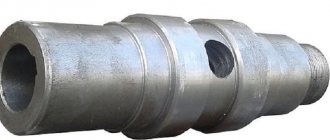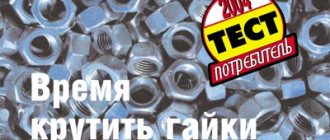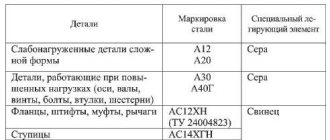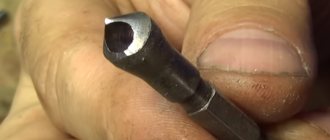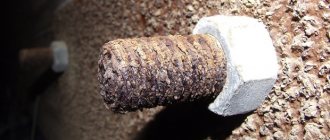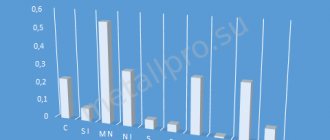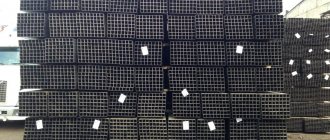GOST
ROLLED HIGH STRENGTH STEEL 19281—89
General technical conditions
Rolled steel with increased strength. General specifications
(ISO 4950-2-81, ISO 4950-3-81, ISO 4951-79, ISO 4995-78, ISO 4996-78, ISO 5952-83)
MKC 77.140.50
OKP 09 2500, 09 3000, 09 7000, 11 2000
Date of introduction 01/01/91
This standard applies to thick-plate, wide-band universal, shaped, long-rolled and bent sections made of high-strength steel used for welded, riveted or bolted structures and used in products, mainly without additional heat treatment.
In terms of chemical composition standards, the standard also applies to thin sheets, ingots, slabs, blooms, forgings and stampings.
1. ASSORTMENT
1.1. Rolled products are manufactured in strength classes 265, 295, 315, 325, 345, 355, 375, 390 and 440.
1.2. In terms of shape, size and maximum deviations, rolled products must comply with the requirements of GOST 8509 - for angular equal-flange, GOST 8510 - angular unequal-flange, GOST 8239 - I-beams, GOST 19425 - for I-beams and special channels, GOST 26020 - for I-beams with parallel flange edges, GOST 8240 - for channels, GOST 19903 - for sheets, GOST 103 - for strip and GOST 82 - for broadband universal rolled products, GOST 7511, GOST 8278, GOST 8281, GOST 8282, GOST 8283, GOST 9234, GOST 10551, GOST 13229, GOST 14635, GOST 19771, GOST 19772, GOST 25577 - for bent profiles, GOST 2590 - for round, GOST 2591 - for square rolled products; GOST 21026 - for channels with a bent flange.
(Changed edition, Amendment No. 1).
1.3. The degree of accuracy of rolled products in terms of dimensions, flatness, and curvature within the limits provided for in the product range standards is indicated by the consumer in the order. If there are no requirements in the order, the manufacturing accuracy is determined by the manufacturer.
1.4. Examples of symbols are given in Appendix 1.
2. TECHNICAL REQUIREMENTS
2.1. Characteristics of the basic version
2.1.1. The basic chemical composition for each strength class is given in Appendix 2.
The mass fraction of phosphorus in steel should be no more than 0.035%, sulfur - no more than 0.040%.
Mass fractions of nitrogen in steel are no more than 0.012%, arsenic is no more than 0.08%. When smelting
steel from Kerch ores, the mass fraction of arsenic is no more than 0.15%, while the mass fraction of phosphorus is no more than 0.030%.
The list of steel grades recommended for various strength classes and thicknesses of shaped and long products is given in Appendix 3, for sheet products - in Appendix 4.
Official publication Reproduction prohibited
★
© Standards Publishing House, 1989 © STANDARDINFORM, 2009
2.1.2. Rolled products are produced in a hot-rolled, heat-treated state or after controlled rolling in accordance with the order. In the absence of an indication, the manufacturing method is determined by the manufacturer.
2.1.3. The surface, requirements for the edges and ends of rolled products must comply with: sheets - GOST 14637, sections and shapes - GOST 535.
(Changed edition, Amendment No. 1).
2.1.4. Delaminations in sheets are not allowed.
2.1.5. Mechanical tensile properties, as well as bending test conditions, must comply with the requirements of Table 1 for shaped and rolled products. 1, sheet and wide universal rolled products and bent profiles - table. 2.
It is permissible not to carry out bending tests on shaped and sheet metal up to 20 mm thick at the manufacturer. In this case, compliance with the established standards by the manufacturer must be guaranteed.
Table 1
Mechanical properties of long and shaped steel
| Rolled thickness, | Limit | Temporary | Relative | Bend to parade | |
| Class strength | supplied by | fluidity From, | Ov resistance, | elongation | mutuality of the parties |
| given strength class, mm, | N/mm2 (kgf/mm2) | N/mm2 (kgf/mm2) | 65, % | (a is the thickness of the sample, d is the diameter | |
| no more | no less | mandrels) | |||
| 265 | 100 | 265(27) | 430(44) | ||
| 295 | 100 | 295(30) | 430(44) | ||
| 325 345 | 60 20 | 325(33) 345(35) | 450(46) 480(49) | 21 | II to |
| 375 | 10 | 375(38) | 510(52) | ||
| 390 | 20 | 390(40) | 530(54) | 18 |
Note. When ordering rolled products of strength class 295 from steel grades 09G2, 09G2D, thickness up to 20 mm, the yield strength must be at least 305 N/mm2 (31 kgf/mm2), and the tensile strength must be at least 440 N/mm2 (45 kgf/mm2) .
table 2
Mechanical properties of sheet, strip, broadband universal rolled products and roll-formed profiles
| Class strength | Thickness of rolled products supplied according to this strength class, mm, no more | Yield strength From, N/mm2 (kgf/mm2) | Temporary resistance Ov, N/mm2 (kgf/mm2) | Relative elongation 65, % | Bending until the sides are parallel (a is the thickness of the sample, d is the diameter of the mandrel) |
| no less | |||||
| 265 | 160 | 265(27) | 430(44) | ||
| 295 | 100 | 295(30) | 430(44) | ||
| 315 | 60 | 315(32) | 450(46) | 91 | |
| 325 | 60 | 325(33) | 450(46) | ||
| 345 | 32 | 345(35) | 490(50) | II to | |
| 355 | 20 | 355(36) | 490(50) | ||
| 375 | 50 | 375(38) | 510(52) | 20 | |
| 390 | 50 | 390(40) | 510(52) | 1 Q | |
| 440 | 32 | 440(45) | 590(60) | 1U |
Note. When ordering rolled products of strength class 265 from steel grade 16GS, the tensile strength must be at least 450 N/mm2 (46 kgf/mm2); when ordering rolled products of strength class 295 from steel grades 09G2, 09G2D, thickness up to 20 mm, the yield strength must be at least 305 N/mm2 (31 kgf/mm2), and the tensile strength must be at least 440 N/mm2 (45 kgf/mm2); when ordering rolled products of strength class 315 from steel grade 12GS, the relative elongation must be at least 26%; when ordering rolled products of strength class 325 from steel grade 09G2S with a thickness of St. 10 to 20 mm, the temporary resistance must be at least 470 N/mm2 (48 kgf/mm2); when ordering rolled products of strength class 345 from steel grades 17GS and 17G1S, the relative elongation must be at least 23%.
When ordering rolled products of strength class 345 from steel grade 10KhNDP, the tensile strength must be at least 470 N/mm2 (48 kgf/mm2), and the relative elongation must be at least 20%.
(Changed edition, Amendment No. 1).
2.2. Performance characteristics installed at the customer's request
2.2.1. Rolled products with regulated chemical composition.
The chemical composition of the melting analysis of the ladle sample must comply with the standards given in table. 3. In finished rolled products, permissible deviations in the mass fraction of elements from the standards given in table. 3, must correspond to table. 4.
Note. For rolled products intended for welded structures and structures for critical purposes, the steel grade and weldability requirements are specified in the order.
Table 3
Chemical composition of low-alloy steel grades
| Brand become | Degree | Mass fraction of elements, % | |||||||
| limp leniya | carbon | silicon | manganese | chromium | nickel | copper | vanadium | others elements | |
| 09G2 | No more than 0.12 | 0,17…0,37 | 1,4…1,8 | No more than 0.30 | No more than 0.30 | No more than 0.30 | _ | _ | |
| 09G2D | No more than 0.12 | 0,17…0,37 | 1,4…1,8 | No more than 0.30 | No more than 0.30 | 0,15…0,30 | _ | _ | |
| 12GS | 0,09…0,15 | 0,5…0,8 | 0,8…1,2 | No more than 0.30 | No more than 0.30 | No more than 0.30 | _ | _ | |
| 16GS | 0,12…0,18 | 0,4…0,7 | 0,9…1,2 | No more than 0.30 | No more than 0.30 | No more than 0.30 | |||
| 14G2 | 0,12…0,18 | 0,17…0,37 | 1,2…1,6 | No more than 0.30 | No more than 0.30 | No more than 0.30 | |||
| 17GS | 0,14…0,20 | 0,4…0,6 | 1,0…1,4 | No more than 0.30 | No more than 0.30 | No more than 0.30 | |||
| 09G2S | No more than 0.12 | 0,5…0,8 | 1,3…1,7 | No more than 0.30 | No more than 0.30 | No more than 0.30 | _ | _ | |
| 09G2SD | No more than 0.12 | 0,5…0,8 | 1,3…1,7 | No more than 0.30 | No more than 0.30 | 0,15…0,30 | _ | _ | |
| 14ХГС | Si | 0,11…0,16 | 0,4…0,7 | 0,9…1,3 | 0,5…0,8 | No more than 0.30 | No more than 0.30 | _ | _ |
| 15HSND | 0,12…0,18 | 0,4…0,7 | 0,4…0,7 | 0,6…0,9 | 0,3…0,6 | 0,2…0,4 | — | — | |
| 10KhNDP | No more than 0.12 | 0,17…0,37 | 0,3…0,6 | 0,5…0,8 | 0,3…0,6 | 0,3…0,5 | — | Phosphorus 0.07…0.12 | |
| aluminum 0.08…0.15 | |||||||||
| 17G1S | 0,15…0,20 | 0,4…0,6 | 1,15…1,6 | No more than 0.30 | No more than 0.30 | No more than 0.30 | |||
| 10G2S1 | No more than 0.12 | 0,8…1,1 | 1,3…1,65 | No more than 0.30 | No more than 0.30 | No more than 0.30 | _ | _ | |
| 10G2S1D | No more than 0.12 | 0,8…1,1 | 1,3…1,65 | No more than 0.30 | No more than 0.30 | 0,15…0,30 | _ | _ | |
| 15GF | 0,12…0,18 | 0,17…0,37 | 0,9…1,2 | No more than 0.30 | No more than 0.30 | No more than 0.30 | 0,05…0,12 | _ | |
| 15GFD | 0,12…0,18 | 0,17…0,37 | 0,9…1,2 | No more than 0.30 | No more than 0.30 | 0,15…0,30 | 0,05…0,12 | _ | |
| 10G2B | No more than 0.12 | 0,17…0,37 | 1,2…1,6 | No more than 0.30 | No more than 0.30 | No more than 0.30 | _ | Niobium 0.02…0.05 | |
| 10G2BD | No more than 0.12 | 0,17…0,37 | 1,2…1,6 | No more than 0.30 | No more than 0.30 | 0,15…0,30 | Niobium 0.02…0.05 | ||
| 10HSND | No more than 0.12 | 0,8…1,1 | 0,5…0,8 | 0,6…0,9 | 0,5…0,8 | 0,4…0,6 | |||
| 15G2SF | 0,12…0,18 | 0,4…0,7 | 1,3…1,7 | No more than 0.30 | No more than 0.30 | No more than 0.30 | 0,05…0,10 | _ |
Continuation of the table. 3
| Brand become | Degree | Mass fraction of elements, | % | ||||||
| limp leniya | carbon | silicon | manganese | chromium | nickel | copper | vanadium | others elements | |
| 15G2SFD | 0,12…0,18 | 0,4…0,7 | 1,3…1,7 | No more than 0.30 | No more than 0.30 | 0,15…0,30 | 0,05…0,10 | ||
| 14G2AF | Sp | 0,12…0,18 | 0,3…0,6 | 1,2…1,6 | No more than 0.40 | No more than 0.30 | No more than 0.30 | 0,07…0,12 | Nitrogen 0,015…0,025 |
| 12G2B | 0,10…0,16 | 0,17…0,37 | 1,30…1,65 | No more than 0.30 | No more than 0.30 | No more than 0.30 | — | Niobium 0.02…0.04 | |
| 16G2AF | 0,14…0,20 | 0,3…0,6 | 1,3…1,7 | No more than 0.40 | No more than 0.30 | No more than 0.30 | 0,08…0,14 | Nitrogen 0,015…0,025 | |
| 15G2AFD | Ps | 0,12…0,18 | Up to 0.17 | 1,2…1,6 | No more than 0.30 | No more than 0.30 | 0,2…0,4 | 0,08…0,15 | Nitrogen 0,015…0,030 |
| 14G2AFD | Sp | 0,12…0,18 | 0,3…0,6 | 1,2…1,6 | No more than 0.40 | No more than 0.30 | 0,15…0,30 | 0,07…0,12 | Nitrogen 0,015…0,025 |
| 16G2AFD | 0,14…0,20 | 0,3…0,6 | 1,3…1,7 | No more than 0.40 | No more than 0.30 | 0,15…0,30 | 0,08…0,14 | Nitrogen 0,015…0,025 | |
| 18G2AF | Ps | 0,14…0,22 | No more than 0.17 | 1,3…1,7 | No more than 0.30 | No more than 0.30 | No more than 0.30 | 0,08…0,15 | Nitrogen 0,015…0,030 |
| 18G2AFD | 0,14…0,22 | No more than 0.17 | 1,3…1,7 | No more than 0.30 | No more than 0.30 | 0,15…0,30 | 0,08…0,15 | Nitrogen 0,015…0,030 |
Notes:
1. The mass fraction of nitrogen in steels not alloyed with nitrogen should not exceed 0.008%. A nitrogen mass fraction of up to 0.012% is allowed, while rolled products, regardless of category, must meet the requirements of Table. 6 and 7 in terms of impact strength standards after mechanical aging.
2. The addition of aluminum and titanium is allowed based on the mass fraction in rolled aluminum - no more than 0.05%, titanium - no more than 0.03%.
3. The mass fractions of phosphorus, sulfur and arsenic in steel must correspond to and. 2.1.1.
Table 4
| Name elements | Permissible deviations in the mass fraction of elements, % | Name elements | Permissible deviations in the mass fraction of elements, % |
| Carbon | ±0,02 | Sulfur Phosphorus Nitrogen | +0,005 |
| Manganese | +0,1 | Vanadium | +0,02 -0,01 |
| Silicon Chromium Nickel Copper | ±0,05 | Niobium | +0,010 -0,005 |
Note. In rolled steel grade 10KhNDP, deviations are allowed in the mass fraction of phosphorus +0.03%, aluminum %•
(Changed edition, Amendment No. 1, Amendment).
2.2.2. Rolled products with a mass fraction of phosphorus limited to no more than 0.030%, sulfur - no more than 0.035%.
2.2.3. Rental with a guarantee of weldability.
The weldability of steel is ensured by its manufacturing technology and chemical composition. (Changed edition, Amendment No. 1).
2.2.4. Rolled products with a standardized carbon equivalent SEKB should be: no more than 0.49 for steel of strength class 390, no more than 0.51 for steel of strength class 440.
2.2.5. Rolled products of strength classes 265, 295, 315 (thickness over 20 mm), 325 (thickness over 10 mm), 345, 355, 375, 390 and 440 with increased resistance to atmospheric corrosion. Wherein
the mass fraction of copper in steel should be 0.15% - 0.30%, the letter D is added to the designation of the strength class (for example, 265D, 295D).
Note. Rolled steel grade 09G2D, strength class 295, can be produced with a thickness of up to 20 mm.
(Changed edition, Amendment No. 1).
2.2.6. Rolled strength classes 315 and 345 using normalization or controlled rolling, strength classes 390, 440 using thermal hardening or controlled rolling.
2.2.7. Rolled products for HL-designed products using heat treatment or controlled rolling specified in the order.
2.2.8. Rolled products of strength classes 390 and 440 with the upper limit of tensile strength limited to values not more than 180 N/mm2 (18 kgf/mm2) exceeding those indicated in the table. 1 and 2.
2.2.9. Rolled products with standardized impact strength.
Depending on the requirements for impact bending tests, rolled products are manufactured according to the categories indicated in Table. 5. Impact strength standards are given in table. 6 and 7.
Notes:
1. When ordering rental products of a category that requires testing on samples with a type V stress concentrator, the consumer can simultaneously specify an additional requirement for rental products in accordance with one of the categories that requires testing on samples with a type U stress concentrator.
2. Long products in categories 5-7 and 13-15 are not produced. Shaped profiles in categories 5-7 and 13-15 are manufactured with a thickness of up to 11 mm inclusive.
Table 6
Impact strength of thick sheet and broad-band universal rolled steel
| Class etc. ness | Rolled thickness, mm | Impact strength KCU, J/cm2 (kgS'M/cm2), at temperature, °C | Impact strength KCV, J/SM2 (KGS'M/SM2), at temperature, °C | Impact strength KCU, J/cm2 (kgf-m/cm2), after mechanical aging at temperature, °C | ||
| +20 | -40 | -70 | 0 | -20 | +20 | |
| no less | ||||||
| 265 | Up to 5 | — | — | — | — | — |
| From 5 » 10 | 79(8,0) | — | — | — | — | |
| » 10 » 20 incl. | 69(7,0) | — | — | — | — | |
| St. 20 » 160 » | 59(6,0) | 29(3,0) | 24(2,5) | — | — |
Continuation of the table. 6
| Impact strength KCU, J/cm2 | Impact strength KCV, J/SM2 (KGS'M/SM2), at temperature, °C | Impact strength KCU, J/cm2 (kgf-m/cm2), after | ||||||
| Class other- | Rolled thickness, | (kgf-m/cm2), at temperature, °C | mechanical aging at temperature, °C | |||||
| ness | +20 | -40 | -70 | 0 | -20 | +20 | ||
| no less | ||||||||
| 295 | Up to 5 | — | — | — | — | — | ||
| From | 5 » 10 | incl. | — | 34(3,5) | — | — | — | |
| St. | 10 » 20 | » | — | 29(3,0) | — | — | — | 29(3,0) |
| » | 20 » 32 | » | 59(6,0) | 29(3,0) | 24(2,5) | — | — | |
| » | 32 » 60 | » | 59(6,0) | 29(3,0) | 24(2,5) | — | — | |
| » | 60 » 100 | » | 59(6,0) | 29(3,0) | 24(2,5) | — | — | |
| 315 | Up to 5 | — | — | — | — | — | ||
| From | 5 » 10 incl. | — | — | — | — | — | ||
| St. | 10 » 20 | » | 59(6,0) | 29(3,0) | 24(2,5) | — | — | 29(3,0) |
| » | 20 » 32 | » | 59(6,0) | 29(3,0) | 24(2,5) | — | — | |
| » | 32 » 60 | » | 59(6,0) | 29(3,0) | 24(2,5) | — | — | |
| 325 | Up to 5 | 59(6,0) | 39(4,0) | 29(3,0) | — | — | ||
| From | 5 » 10 incl. | 59(6,0) | 39(4,0) | 29(3,0) | — | — | ||
| St. | 10 » 20 | » | 59(6,0) | 34(3,5) | 29(3,0) | — | — | 29(3,0) |
| » | 20 » 32 | » | 59(6,0) | 29(3,0) | 24(2,5) | — | — | |
| » | 32 » 60 | » | 59(6,0) | 29(3,0) | 24(2,5) | — | — | |
| 345 | Up to 5 | 64(6,5) | 39(4,0) | 29(3,0) | — | — | ||
| From | 5 » 10 incl. | 64(6,5) | 39(4,0) | 29(3,0) | — | — | 29(3,0) | |
| St. | 10 » 20 | » | — | 29(3,0) | 29(3,0) | 40(4,0) | 40(4,0) | |
| » | 20 » 32 | » | — | 29(3,0) | 29(3,0) | 40(4,0) | 40(4,0) | |
| 355 | Up to 5 | — | — | — | — | — | ||
| From | 5 » 10 incl. | — | — | — | — | — | 29(3,0) | |
| St. | 10 » 20 | » | — | 29(3,0) | — | — | — | |
| 375 | Up to 5 | — | 39(4,0) | 34(3,5) | — | — | ||
| From | 5 » 10 incl. | — | 39(4,0) | 34(3,5) | — | — | ||
| St. | 10 » 20 | » | — | 39(4,0) | 29(3,0) | — | — | 29(3,0) |
| » | 20 » 32 | » | — | 39(4,0) | 29(3,0) | — | — | |
| » | 32 » 50 | » | — | 39(4,0) | 29(3,0) | — | — | |
| 390 | Up to 5 | — | 44(4,5) | 34(3,5) | — | — | ||
| From | 5 » 10 incl. | — | 44(4,5) | 34(3,5) | — | — | ||
| St. | 10 » 15 | » | — | 39(4,0) | 29(3,0) | 40(4,0) | — | 29(3,0) |
| » | 15 » 32 | » | — | 39(4,0) | 29(3,0) | 40(4,0) | 40(4,0) | |
| » | 32 » 50 | » | — | 39(4,0) | 29(3,0) | 40(4,0) | 40(4,0) | |
| 440 | Up to 5 | — | 44(4,5) | 34(3,5) | — | — | ||
| From | 5 » 10 incl. | — | 44(4,5) | 34(3,5) | — | — | 29(3,0) | |
| St. | 10 » 20 | » | — | 39(4,0) | 29(3,0) | — | — | |
| » | 20 » 32 | » | — | 39(4,0) | 29(3,0) | — | — |
Notes:
1. In the absence of KCV standards, the determination of impact strength is carried out for a set of data, after which standards are established. The test results are recorded in the quality document.
2. KCU impact strength values for order category 3 must be no less than the standards established for order category 4. KCU impact strength values for order categories 5 and 6 must be no lower than the standards established for order category 7.
3. For rental of strength class 265 from steel grade 09G2S, the impact strength of KCU at a test temperature of minus 40 °C must be no less than 34 J/cm2 (3.5 kgf ■ m/cm2), at a test temperature of minus 70 °C - no less 29 J/cm2 (3.0 kgf ■ m/cm2).
4. For rolling of strength class 295 from steel grades 09G2, 09G2D for thicknesses from 20 to 32 mm inclusive. the value of impact strength KCU must be at least 39 J/cm2 (4.0 kgf ■ m/cm2) at a test temperature of minus 40 °C.
5. For rolled products of strength class 325 from steel grade 14G2 for thicknesses from 5 to 20 mm, the value of impact strength KCU at a test temperature of minus 40 °C is reduced by 5 J/cm2 (0.5 kgf ■ m/cm2).
6. For rolled products of strength class 345 with a thickness from 5 to 10 mm inclusive. from steel grade 17GS, the value of impact strength KCU at a test temperature of minus 40 °C should be no less than 44 J/cm2 (4.5 kgf ■ m/cm2), from steel grade 09G2S at a test temperature of minus 70 °C no less than 34 J/ cm2 (3.5 kgf ■ m/cm2).
7. For rolling of all strength classes with a regulated chemical composition from steel grades 09G2, 14G2, 12GS, 17GS, 17G1S, 15GF, 15G2SF, 10G2B, 12G2B, 14KhGS and 10KhNDP impact strength standards KCU at a test temperature of minus 70 °C until 01/01/93 were not a rejection characteristic and were determined for a set of statistical data.
8. For rolled products of strength class 390 with a thickness from 15 to 40 mm inclusive, made of steel grade 10HSND, the value of impact strength KCU at a test temperature of minus 40 °C must be at least 49 J/cm2 (5.0 kgf ■ m/cm2).
Table 7
Impact strength of long, strip and shaped rolled products
| Class other- | Rolled thickness, mm | Impact strength KCU, J/cm2 (kgf-m/cm2), at temperature, °C | Impact strength KCV, J/SM2 (KGS'M/SM2), at temperature, °C | Impact strength KCU, J/cm2 (kgf-m/cm2), after mechanical aging at temperature, °C | ||
| ness | +20 | -40 | -70 | 0 | -20 | +20 |
| no less | ||||||
| 265 | Up to 20 | 98(10,0) | — | — | — | — |
| St. 20 » 32 incl. | — | 29(3,0) | — | — | — | 29(3,0) |
| » 32 » 100 » | 59(6,0) | 29(3,0) | — | — | — | |
| 295 | To 10 | 98(10,0) | 39(4,0) | 29(3,0) | — | — |
| From 10 » 20 incl. | 98(10,0) | 29(3,0) | 29(3,0) | — | — | |
| St. 20 » 32 » | — | 29(3,0) | — | — | — | 29(3,0) |
| » 32 » 60 » | 59(6,0) | 29(3,0) | — | — | — | |
| » 60 » 100 » | 59(6,0) | 29(3,0) | — | — | — | |
| 325 | Up to 5 | 64(6,5) | 34(3,5) | 34(3,5) | 34(3,5) | 34(3,5) |
| From 5 » 10 incl. | 64(6,5) | 34(3,5) | 34(3,5) | 34(3,5) | 34(3,5) | |
| St. 10 » 20 » | 59(6,0) | 29(3,0) | 29(3,0) | 34(3,5) | 34(3,5) | 29(3,0) |
| » 20 » 32 » | 59(6,0) | 29(3,0) | — | — | — | |
| » 32 » 60 » | 59(6,0) | 29(3,0) | — | — | — | |
| 345 | Up to 5 | 64(6,5) | 39(4,0) | 29(3,0) | 40(4,0) | 40(4,0) |
| From 5 » 10 incl. | 64(6,5) | 39(4,0) | 29(3,0) | 40(4,0) | 40(4,0) | 29(3,0) |
| St. 10 » 20 » | — | 29(3,0) | — | — | — | |
| 375 | Up to 5 | — | 39(4,0) | — | — | — |
| From 5 » 10 | — | 39(4,0) | — | — | — | 29(3,0) |
| 10 | — | 29(3,0) | — | — | — | |
| 390 | Up to 5 | — | 39(4,0) | 34(3,5) | — | — |
| From 5 » 10 incl. | — | 39(4,0) | 34(3,5) | — | — | 29(3,0) |
| St. 10 » 15 » | — | 34(3,5) | 29(3,0) | — | — | |
| » 15 » 20 » | — | 34(3,5) | — | — | — |
Notes:
1. In the absence of KCV standards, the determination of impact strength is carried out for a set of data, after which the standards are established. The test results were recorded in the quality document.
2. KCU impact strength values for order category 3 must not be lower than those established for order category 4. KCU impact strength values for order categories 5 and 6 must not be lower than those established for order category 7.
3. For rental of strength class 325 from steel grade 09G2S with a thickness from 5 to 32 mm inclusive. the impact strength values KCU at a test temperature of minus 40 °C increase by 5 J/cm2 (0.5 kgf ■ m/cm2).
4. For rental of strength class 345 from steel grade 09G2S with a thickness of 5 to 10 mm inclusive. The impact strength of KCU at a test temperature of minus 70 °C must be at least 34 J/cm2 (3.5 kgf ■ m/cm2).
5. For rental of strength class 390 from steel grade 10HSND with a thickness of 5 to 10 mm inclusive. impact strength values KCU at a test temperature of minus 40 °C must be at least 49 J/cm2 (5.0 kgf ■ m/cm3), thickness over 10 to 15 mm inclusive. — not less than 39 J/cm2 (4.0 kgf ■ m/cm2).
(Changed edition, Amendment No. 1).
2.2.10. Rolled with descaling.
2.2.11. Rolled with deburring and without crushing ends.
2.2.12. Rolled products with ultrasonic continuity testing.
The continuity class of sheets is established by agreement between the manufacturer and the consumer in accordance with GOST 22727. Inspection of edge zones is carried out at the request of the consumer.
(Changed edition, Amendment No. 1).
2.2.13. Rolled products with a regulated upper yield strength.
2.3. Marking and packaging of rolled products - in accordance with GOST 7566.
3. ACCEPTANCE RULES
3.1. Rules for acceptance of rolled products according to GOST 7566 with additions. Rentals are accepted in batches. The batch must consist of rolled products of the same strength class, the same thickness thickness, the same steel heat treatment mode, and the same basic chemical composition. The batch weight should not exceed 350 tons.
A batch of rolled steel with a regulated chemical composition and cast into ingots must also consist of one melting ladle; in a batch of rolled steel cast on continuous casting machines (CCMs), the difference in the mass fraction of carbon in the steel should not exceed 0.04%, and in the mass fraction of manganese - 0.15% according to ladle analysis.
Each batch of rental products is accompanied by a quality document containing: a trademark or the name and trademark of the manufacturer; consumer name; Order number;
date of issue of the quality document; wagon or vehicle number;
name of the product, dimensions, number of pieces, their total weight and, in the case of delivery based on delivery (theoretical) weight, the TM mark; strength class; actual chemical composition; rolling accuracy; mechanical properties; type of flatness for the sheet; nature of the edge for the sheet;
surface quality group for long products;
type of heat treatment (if rolled products are supplied in a heat-treated state); NTD number;
stamp of the technical control department.
For rentals accepted with characteristics established by the consumer in accordance with and. 2.2, the quality document additionally indicates the test results for the ordered indicators.
For rolled products accepted with a regulated chemical composition, the quality document indicates the steel grade, chemical composition and heat number, batch number if the heat is divided into batches. For rolled products with a guarantee of weldability, an additional designation is indicated - St.
(Changed edition, Amendment No. 1).
3.2. To check the quality of rolled products, two rods or two sheets, two strips, one roll are selected from each batch.
3.3. If unsatisfactory test results are obtained for at least one indicator, repeated tests are carried out in accordance with GOST 7566.
4. CONTROL METHODS
4.1. Sampling to determine the chemical composition is carried out according to GOST 7565.
4.2. Chemical analysis of steel is carried out according to GOST 22536.0 - GOST 22536.12, GOST 27809, GOST 12344 - GOST 12352, GOST 12355 - GOST 12359, GOST 12361, GOST 12364, GOST 18895, GOST 28473 or other methods that ensure the necessary accuracy of the analysis.
In case of disagreement in quality assessment, the assessment is carried out using the methods established in the standard. (Changed edition, Amendment No. 1).
4.3. Carbon equivalent (CEBE) is calculated using the formula
Mn Si Cr Ni Si V P 6 + 24 + 5 + 40 + 13 + 14 + 2 '
(1)
where C, Mn, Si, Cr, Ni, Cu, V, P are the mass fractions of carbon, manganese, silicon, chromium, nickel, copper, vanadium and phosphorus.
4.4. Control of surface quality and dimensions of rolled sheets - in accordance with GOST 14637, long products - in accordance with GOST 535.
4.5. Delamination of rolled products during cutting is controlled by inspection of the edges and ends without the use of magnifying devices.
If necessary, the quality of the metal on the edges of sheets and universal strips is checked by removing chips: in this case, bifurcation of the chips serves as a sign of discontinuity of the metal.
4.5.1. Ultrasonic testing of the continuity of rolled sheets is carried out in accordance with GOST 22727.
4.6. Sampling and production of samples for mechanical and technological tests are carried out in accordance with GOST 7564. Samples are cut lengthwise from shaped rolled products and universal strips, and across the rolling direction from sheet metal. When testing for impact bending on samples with a sharp notch, samples are taken along the rolling direction.
For rolled products with a diameter or side of a square greater than those indicated in the table. 1 and 7, it is allowed to determine the mechanical properties on samples cut from blanks, forged or rolled to the dimensions regulated by Table. 1 and 7. The standards of mechanical properties in this case must correspond to table. 1 and 7.
(Changed edition, Amendment No. 1).
4.7. From each rod, sheet, universal strip, roll selected for control, one sample is taken for tensile and bending tests, and two samples for each temperature are taken to determine impact strength. The quality of bent profiles is controlled by the workpiece.
4.8. Tensile testing of rolled products is carried out on samples of five times the length in accordance with GOST 1497.
(Changed edition, Amendment No. 1).
4.9. The bending test is carried out according to GOST 14019.
4.10. Determination of the impact strength of rolled products with a nominal thickness of up to 10 mm inclusive is carried out on samples of type 1, 2 or 3, and for categories 8 and 9 - types 11, 12, 13 according to GOST 9454. For rolled products with a thickness of more than 10 mm, the impact strength is determined on samples of type 1, and for categories 8 and 9 - type 11 according to GOST 9454.
The impact strength of shaped and strip products with a thickness of 3-4 mm, and sheet products with a thickness of less than 5 mm can be determined on samples with a width equal to the thickness of the product.
(Changed edition, Amendment No. 1).
4.11. Impact strength after mechanical aging is determined according to GOST 7268 on samples with a U-type concentrator. The thickness of the samples must correspond to those adopted in clause 4.10.
4.12. When testing samples with a type U concentrator, a reduction in impact strength on one sample is allowed by 15%; when testing samples with a type V concentrator, a reduction in impact strength on one sample is allowed by 30%; in this case, the average value of the test results must not be lower than the standards in Table. 6 and 7.
4.13. When the manufacturer uses statistical and other non-destructive methods for monitoring mechanical properties in accordance with regulatory and technical documentation, the manufacturer may not carry out control of mechanical properties according to the methodology provided for by this standard. The manufacturer guarantees compliance of manufactured products with the requirements of this standard. In case of disagreement in quality assessment and during periodic product quality checks, control methods provided for in this standard are used.
5. TRANSPORTATION AND STORAGE
5.1. Transportation and storage - in accordance with GOST 7566, bent profiles - in accordance with GOST 11474.
APPENDIX 1 Mandatory
EXAMPLES OF SYMBOLS
Hot-rolled shaped products, standard rolling precision (B), I-beam number 30 according to GOST 8239-89, strength class 345:
_ 30-V GOST 8239-89
I-beam 34, WCT Ш81_89 ■
Hot-rolled shaped steel, channel number 20 with parallel flange edges (P) in accordance with GOST 8240-97, strength class 315:
TTT 20 GOST 8240-97
Shesher sh tst Sh81_89
Hot-rolled shaped steel, standard rolling accuracy (B), angular unequal flange, dimensions 63 x 40 x 4 mm according to GOST 8510-86, strength class 345:
Corner
63х40х4-В GOST 8510-86 345 GOST 19281-89
Hot-rolled bars, square, standard rolling accuracy (B1) with a square side of 50 mm according to GOST 2591-2006, strength class 315:
~ . 50-B1 GOST 2591-2006
Square _?/J gast 19281_89
Hot-rolled bars, round, of normal rolling accuracy (B1) with a diameter of 40 mm according to GOST 2590-2006, first group, ninth category, strength class 345:
40-B1 GOST 2590-2006 PW 345-9-1 GOST 19281-89 '
Rolled sheets, normalized, with increased rolling precision (A), high flatness (PV), with a cut edge (O) dimensions 8×1100 x 5000 mm according to GOST 19903-74, strength class 390, made of steel grade 10HSND:
^ A-PV-0-8x1100x5000 GOST 19903-74
sheet-
Analog (substitute) of steel grade 09G2S GOST 19281-14:
steel grade 09G2DT, 09G2, 10G2S, S345
Additional conditions for rolled metal products at the request of the Buyer in accordance with GOST, TU, etc. NTD: 1. 100% UZK 0, 1, 2, 3 continuity classes in accordance with GOST 22727-88. 2. Trim edge. 3. Flatness: high, especially high. 4. Heat treated: controlled rolling, normalizing, high tempering, high tempering. 5. Z-properties according to GOST 28870-90, relative narrowing in the direction of the thickness of the rolled product, no less than 15%, 25%, 35%.
Products group:
| NAME | PRICE | |||
